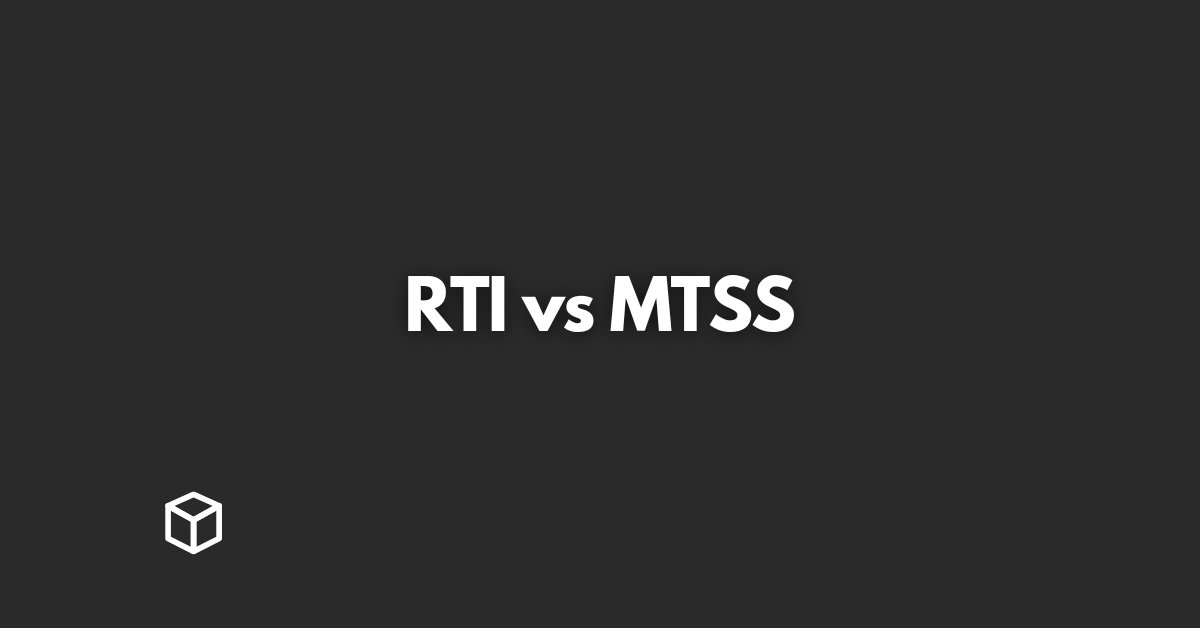In the field of education, there are many different approaches to identifying and supporting students with learning challenges.
Two of the most widely used methods are Response to Intervention (RTI) and Multi-Tiered Systems of Support (MTSS).
Both RTI and MTSS are designed to help educators identify and support students who may be struggling in the classroom, but they have some key differences.
In this article, we will provide a detailed comparison of RTI and MTSS and their implications for special education and student support.
What is RTI?
RTI is a process used to identify and support students who are struggling in the classroom.
The basic principles of RTI include providing high-quality instruction to all students, using data to identify students who are struggling, and providing targeted interventions to support these students.
The RTI process is typically divided into three tiers: universal, targeted, and intensive.
In the universal tier, all students receive the same high-quality instruction.
In the targeted tier, students who are struggling receive additional support, such as small-group instruction or additional time with the teacher.
In the intensive tier, students who are still struggling receive even more intensive interventions, such as one-on-one instruction or specialized programs.
The role of RTI in identifying and supporting students with learning challenges is to provide early intervention, by identifying students who are struggling at an early stage and providing them with the support they need to succeed.
It also helps in identifying students who may have a learning disability.
What is MTSS?
MTSS is a comprehensive approach to addressing the needs of all students, including those with disabilities.
It is based on the idea that all students should have access to high-quality instruction and support, regardless of their abilities or needs.
Like RTI, MTSS is typically divided into three tiers: universal, targeted, and intensive.
However, the focus of MTSS is on addressing the needs of all students, not just those who are struggling.
In the universal tier, all students receive the same high-quality instruction.
In the targeted tier, students who are struggling receive additional support, such as small-group instruction or additional time with the teacher.
In the intensive tier, students who are still struggling receive even more intensive interventions, such as one-on-one instruction or specialized programs.
MTSS is designed to address the needs of all students, not just those who are struggling.
This includes students with disabilities, who may require specialized instruction and support.
Comparison of RTI and MTSS
While both RTI and MTSS have similar approaches to providing support to students, there are some key differences between the two.
The main difference is that RTI is focused on identifying and supporting students who are struggling, while MTSS is focused on addressing the needs of all students, including those with disabilities.
Another key difference is that RTI is typically used as a way to identify students who may have a learning disability, while MTSS is used as a comprehensive approach to addressing the needs of all students.
Pros and cons of each approach
RTI has the advantage of providing early intervention for students who are struggling, which can help to prevent more serious problems down the road.
However, RTI can be time-consuming and costly, and it may not always be the best approach for identifying students with disabilities.
MTSS has the advantage of addressing the needs of all students, including those with disabilities, but it can be difficult to implement and may not always be the best approach for identifying MTSS can also be more cost-effective in the long run, as it addresses the needs of all students and not just those who are struggling.
When it comes to deciding between RTI and MTSS, it’s important to consider the specific needs of your school or district.
Both approaches have their advantages and disadvantages, and it may be best to use a combination of both.
In terms of implementation, it’s important to have a clear plan in place and to involve all stakeholders, including teachers, administrators, parents, and students.
Further, it’s important to use evidence-based practices and to regularly assess the effectiveness of the interventions.
FAQs:
Q: What is the main difference between RTI and MTSS?
A: The main difference is that RTI is focused on identifying and supporting students who are struggling, while MTSS is focused on addressing the needs of all students, including those with disabilities.
Q: When should RTI be used?
A: RTI should be used as a way to provide early intervention for students who are struggling in the classroom. It can also be used as a way to identify students who may have a learning disability.
Q: When should MTSS be used?
A: MTSS should be used as a comprehensive approach to addressing the needs of all students, including those with disabilities. It can also be used as a more cost-effective approach in the long run.
Q: Can RTI and MTSS be used together?
A: Yes, RTI and MTSS can be used together to support student success. It is important to have a clear plan in place and to involve all stakeholders.
Q: How do I implement RTI or MTSS in my school or district?
A: To implement RTI or MTSS in your school or district, it’s important to have a clear plan in place and to involve all stakeholders, including teachers, administrators, parents, and students. Additionally, it’s important to use evidence-based practices and to regularly assess the effectiveness of the interventions.
Conclusion
In conclusion, RTI and MTSS are both effective approaches to identifying and supporting students with learning challenges, but they have some key differences.
By understanding the similarities and differences between the two, educators and school leaders can make informed decisions about how to best support the needs of their students.
It is always recommended to use evidence-based practices and involve all stakeholders when implementing any approach.




